A weekly affair
The vibrant tribal markets of Orissa are not simply a forum for economic exchange; these lively and boisterous gatherings are at the heart of all social activity and recreation among the myriad ethnic communities of the state.
Text and images: Joydip Mitra
 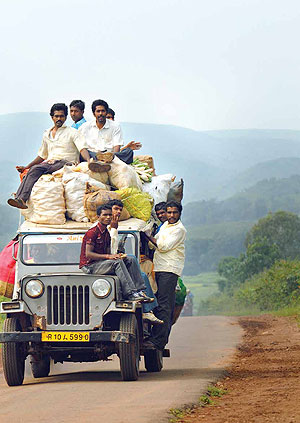 |
|
Traders from towns on their way to a haat at Gupteswar through distant mountains. These hills and forests are home to many isolated tribes who participate in the markets in the Koraput region of Orissa. |
In classical terms, a market is an institution through which resources are shared or exchanged. Economics, classical or controversial, demands an almost anatomical dissection of that institution and several theories flourish. Terms like marginal cost, effective demand or optimum allocation became part of household vocabulary, and many wars were fought. Can we dream of backtracking to that realm of direct transactions when there was no currency, no world beyond the horizon, no regard for automation, no abstract debate between capitalism and communism? No, ositively not. But in this part of tribal Orissa, one can certainly get an idea of how a market operated before it got so anatically theorised.
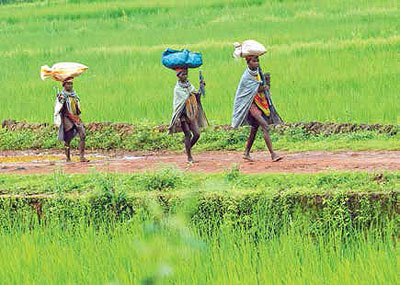 |
|
Kutia ladies arriving at the haat at Onkadeli though all-engulfing green fields. Many of them have to walk for more than a day to reach their only window to the outside world. |
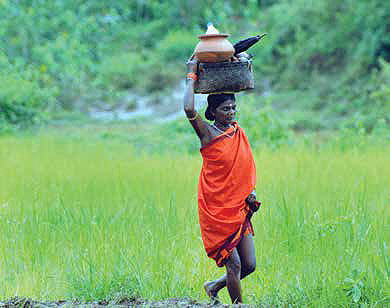 |
|
The boldest colours of their attire are complemented by all the serene shades that occur in nature |
They are the Bondos, Dongaria Kondhs, Parajas, Kutias and many others, who are considered among the most indigenous of Indian tribes. Living simply and in harmony, they prefer to not travel too far beyond their geopolitical boundaries—usually deep within a forest or on a sacred hill-top. But their artisans sculpt clay almost sensuously, weavers weave mystic patterns, blacksmiths still hide mysterious secrets of alchemy. And because they still have to barter their excess grains and earthen pots; a ‘haat’ or a weekly market makes such exchanges possible. Certainly, a
fascinating study of microeconomics.
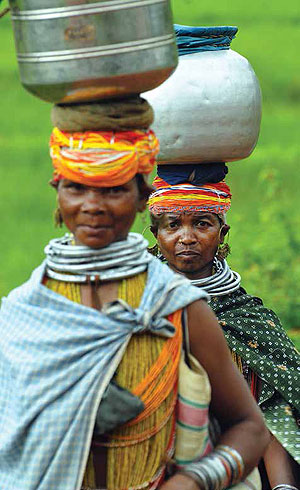 |
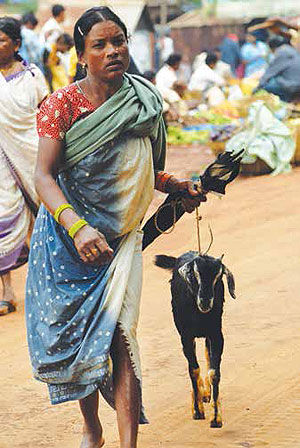 |
|
The boldest colours of their attire are complemented by all the serene shades that occur in nature |
A Dongaria Kondh girl at Chatikona with her hard-negotiated catch. Many clips—usually made of wood—are tucked into the hair of these girls as a unique characteristic of their style. |
|
|
|
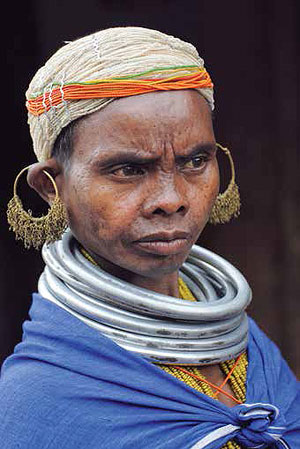 |
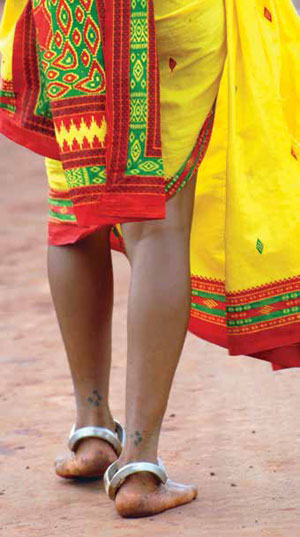 |
|
A Bondo lady at her regal best |
Colour scheme on the dusty road leading to the haat at Kundli |
Around Jeypore, in the district of Koraput, Orissa, from Monday to Friday, five haats operate at Chatikona, Ramgiri, Gupteswar, Onkadeli and Kundli. These places are about 60-70 km away from Jeypore, and positively situated at the end of a road (Kundli is the only exception), beyond which all seems unknown. So, as far as infrastructure goes, these haats are extreme places, which traders from town can just about access, and where the intended consumers feel at home, surrounded by forests or by immense stretches of paddy. The area around each
haat is populated mainly by one particular tribe, and therefore, predominantly offers their distinct wares. In Chatikona, the Dongarias trade in earthen pots; at Ramgiri, the Parajas deal in mats and livestock, in Gupteswar, the Garabas exchange their wicker baskets. Onkadeli is known worldwide, as two nearextinct tribes, the Bondos and the Kutias, come here to sell metal ornaments and beaded necklaces. Draped in beads, with fat rings encircling the neck, their very presence is a visual treat. These tribes follow a purely matriarchal society, where a girl weds a boy about half her age, does all the work and enjoys all rights of inheritance. A shaven head is an indication that the
lady is married. This haat is their only window to the outside world and they make the most of it. Rice-beer is consumed in improbable proportions, the fateful dice rolls infinite turns, and few pennies are won or lost. This haat at Onkadeli certainly is a market in the most basic, fundamental sense.
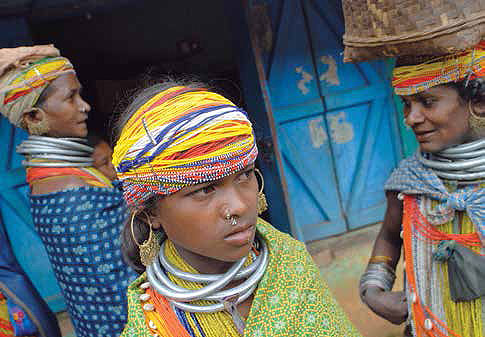 |
|
Bondo girl with her seniors doing trade at Onkadeli. She has not got married yet; otherwise she couldn’t have retained her hair under beadsheadgear |
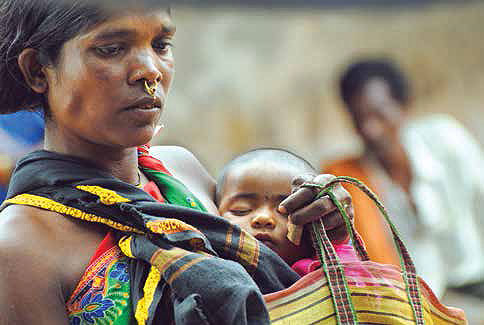 |
|
Paraja mother on her stroll through makeshift stalls at Ramgiri. Three rings tucked to the nose stand for her tribal identity. |
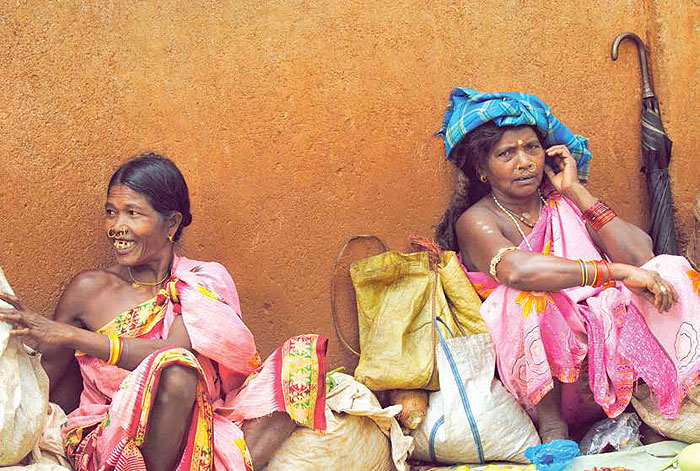 |
|
Little business with more merriment is the order for these ladies at Chatikona |
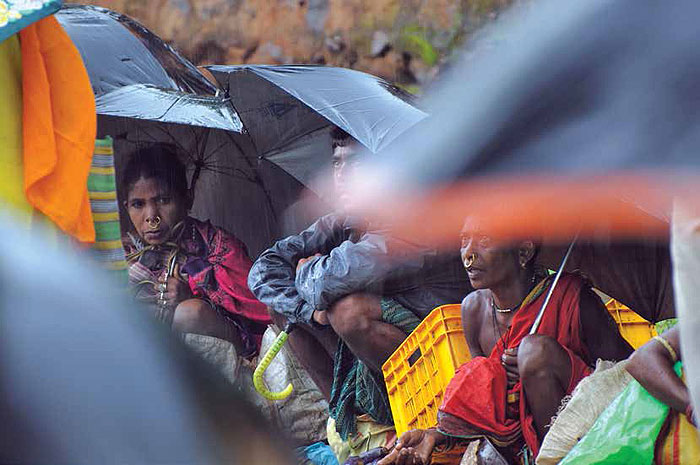 |
|
Trade in torrential rain at Chatikona |
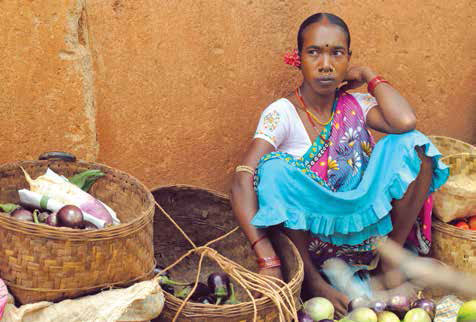 |
|
A young Paraja girl at Chatikona |
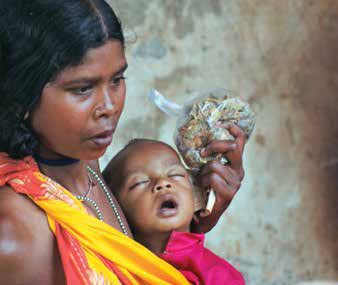 |
|
Kutia mom with son at Onkadelli, collecting tobacco leaf |
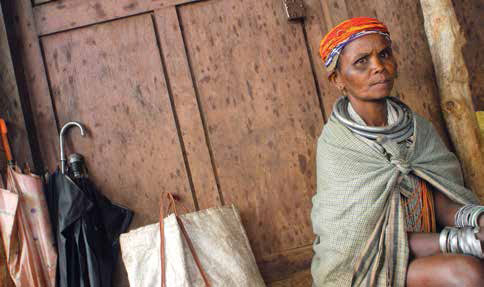 |
|
By a closed door that has attained her own skin-texture over the years, this Bondo lady sets up her stall every Wednesday, at Onkadeli. |
As for the wares, I saw all sorts of things being sold. There are heaps of ant-eggs, bamboo-roots; glass-bangles compete with bead necklaces, earthen pots sold with aluminium saucers, wicker baskets with plastic bowls. These haats are ripe fields to practise perambulating trades. Carrying his sewing machine, a tailor moves around and does good business, as does the cobbler and the knife-sharpener. And there is also ample indication of third-party capital playing roles. On the way to the haats, many a trader will attempt to provoke a haat-bound woman to sell them her wares right there. This way, they could have evaded the competitive pricing of the market; but, the formidable ladies they encounter usually don’t get them too far. And thus these haats operate—through provocation, competition, seclusion, and through daring display of rural finery. As the last man departs in twilight, the place is left deserted—the makeshift stalls now looking like submerged masts in the darkness, until next week